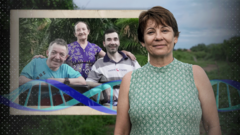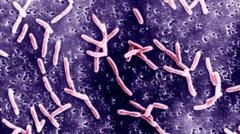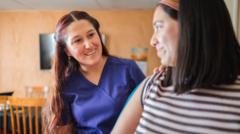In the remote town of Serrinha dos Pintos, Brazil, a groundbreaking discovery by geneticist Silvana Santos has given a voice to families grappling with the complexities of a rare genetic disorder that left many local children without the ability to walk. This tight-knit community of fewer than 5,000 inhabitants had long struggled to understand the affliction affecting their loved ones until Santos's pivotal research revealed the existence of Spoan syndrome – a rare condition caused by a genetic mutation that weakens the nervous system.
Prior to the arrival of Santos more than 20 years ago, families felt isolated and without hope for a diagnosis. After investigating the situation, Santos—named one of the BBC's 100 most influential women in 2024—confirmed that the syndrome manifests only when the mutated gene is inherited from both parents. This revelation was further complicated by local marriage customs, where nearly one-third of couples are believed to be related, often marrying cousins, which can increase the likelihood of genetic disorders.
Santos, originally from São Paulo, traveled to Serrinha after hearing from family members that many in the town were afflicted with mysterious disabilities, including her neighbor's daughter, Zirlândia. After years of extensive research that involved collecting DNA samples and engaging with the locals, Santos and her team published their findings in 2005, shedding light on Spoan syndrome and its implications for the community.
The town's geographical isolation and a history of inbreeding, a consequence of socio-cultural norms, have led to a heightened risk of passing on genetic conditions. Studies indicated that around 30% of couples in Serrinha are related, with a noticeable percentage having children with disabilities. Experts have pointed out that the risk of genetic disorders is significantly higher in cousin marriages compared to unrelated couples.
Santos's quest for a diagnosis involved countless trips from São Paulo to Serrinha, often filled with conversations over coffee and exchanges of family stories, which ultimately revealed how the syndrome could be traced back to early European settlers. The genetic mutation likely arrived centuries ago, pointing to a possible common ancestry among affected individuals.
The impact has been profound. Residents feel a newfound sense of empowerment as the community's understanding of Spoan expands. Santos hopes to further mitigate the risks by providing genetic education and offering screenings for couples, ensuring they are informed about potential health implications while preserving their cultural practices.
As Santos continues to foster relationships with the town, enhancing the lives and independence of those affected, the story of Serrinha dos Pintos serves as a poignant reminder of the intersection between genetics, community, and the ongoing quest for understanding and support.











